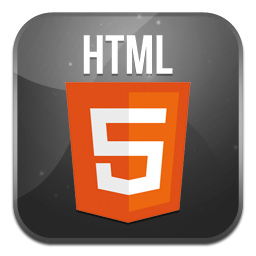HTML5 Officially Arriving Soon
On December 17, 2012 the World Wide Web Consortium (W3C) announced that HTML5 features and definitions are now complete and HTML5 itself will become official in 2014. Many web developers who already use HTML5 are rejoicing while many non-developers are asking, “there is more than one HTML?” This news might seem confusing, “complete but not official, but now in use?” Fear not, understanding the concept of HTML5 and it’s benefits is actually simple. Here is a brief recap of some of the wonderful advancements HTML5 is bringing to the web and what it can bring to your website.
Video and Audio Support
People have been watching videos and hearing music on the web for a long time, so what is new about HTML5 support for them? It boils down to implementation without the need for plugins. Video and audio have long been plagued with a variety of different online codecs, Flash, Real Player, Xvid, etc. HTML5 brings unity to an otherwise motley system. By allowing programers to target native video formats for devices and browser types, the end user is more likely to be able to play a video without downloading a plugin. HTML5 also allows backwards compatibility by having developers upload flash and other formats for people not using modern browsers. Hopefully people in the future will be liberated from the annoying, “You do not have the proper codec/plugin” message when playing videos. Most importantly for the forward thinking website owner, HTML5 has great support for mobile browsers. This means your content can play on any device equipped with an up to date web browser and presumably any device that is launched in the future. A clear victory for web standards.
Advanced Location Info
Geolocation becomes very powerful with HTML5 support. Developers can create dynamic content based on where a user is. For instance, businesses with many locations will have the ability to display website content for the closest location(s). This means deals, information, and recommendations can be tailored for you and updated automatically as you travel. The web will become a custom place that is different for every user and fits the needs of the individual.
Improved Web Forms
 It is true that forms have been around for years also and many sites use them in a myriad of different ways. HTML5 brings easier to build/manage forms. Forms that offer much better security and validation. HTML5 introduces the Keygen elements which can, according to W3C Schools, be “used to generate a client certificate to authenticate the user”. This means a nice reduction in spam entries and scams. Although not as widely supported in today’s browsers, it will be in future updates. Forms will also have interesting features such calendar inputs, advanced sliders, and better styling. This means your forms will fit in better with the styling and branding of your website.
It is true that forms have been around for years also and many sites use them in a myriad of different ways. HTML5 brings easier to build/manage forms. Forms that offer much better security and validation. HTML5 introduces the Keygen elements which can, according to W3C Schools, be “used to generate a client certificate to authenticate the user”. This means a nice reduction in spam entries and scams. Although not as widely supported in today’s browsers, it will be in future updates. Forms will also have interesting features such calendar inputs, advanced sliders, and better styling. This means your forms will fit in better with the styling and branding of your website.
Animation
Until recently in order to achieve complex animations on a website we needed to rely on technology such as a Flash plugin. This brings up problems such as compatibility. Websites and web elements that use flash are not visible on iOS devices such as iPhones and iPads. For devices that do support Flash, a plugin is needed before the content is visible. HTML5 supports rich animations for games, websites, and applications that work on modern browsers and devices seamlessly. Your website can be fancy and unique while at the same being accessible and standards compliant.
Semantics and Microformats
Semantics? You thought we were talking about HTML5 not English Grammar? Well, semantics play an important role for the web also. In the past, developers were able to name sections of their web pages whatever names they wished. This created confusion when other developers or clients wished to edit pages and affected how pages are viewed by the newest browsers/search engines. HTML5 introduces standard names for web page sections. This is a boost for SEO on sites which clients browse with updated browsers, development/editing, and the visually impaired who require well formatted documents for their audio based browsers.
Microformats take semantics to another level. They allow developers and site owners to precisely tag what kind of content is each section of the site such as contact information, resumes, business cards, business contacts and connections, and much more. Theoretically this will allow for better SEO by search engines who can classify the data on websites better based on their content types. While still in it’s infancy, microformats could take off as an SEO best practice in the future. They also serve as good roadmarks for developers looking to edit code since they are meant to be readable by people.
The Future Of The Web
We have just scratched the surface of what HTML5 can do and the features it brings to the web, the user, and the developer. HTML5 is in use today and it’s acceptance is guaranteed by the developers of tomorrow. Although it has many differences on how it is written and structured when compared to it’s predecessors, all of the changes make it easier and more powerful at the same time. When paired with CSS3, it becomes the new workhorse of the web industry. HTML5 was built with forward thinking in mind to be a standard that can last and suit the needs of tomorrow’s devices. We should all shout a hooray for web standards.
Contact us at Design Brooklyn and we will be happy to help.



